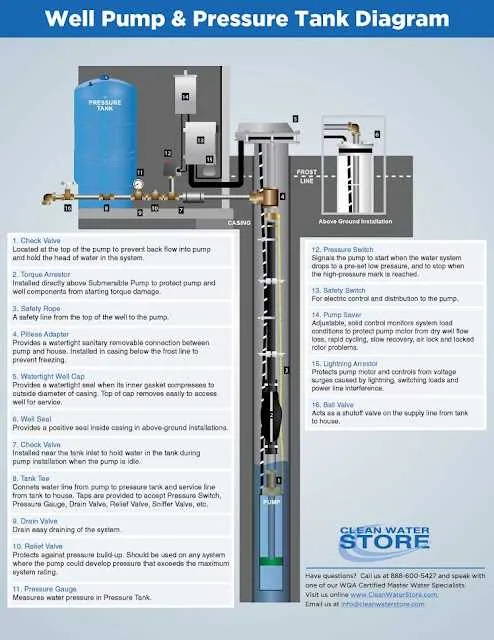
To ensure efficient operation of a borehole setup, understanding the layout of its integral parts is critical. The schematic of this subterranean access includes key segments such as the casing, screen, pump, and discharge pipe, each fulfilling distinct roles in fluid retrieval.
The casing maintains structural integrity, preventing collapse and contamination, while the screen filters sediment, safeguarding the extraction mechanism. Proper installation depth and material selection influence longevity and performance significantly.
The pumping unit dictates flow rate and energy consumption. Choosing a model aligned with aquifer characteristics optimizes output and reduces wear. Lastly, the delivery conduit channels extracted liquid to the surface or storage, requiring secure seals to prevent leaks and preserve pressure.
Detailed understanding of these elements aids in maintenance planning and troubleshooting, directly affecting sustainability and functionality of the extraction apparatus.
Identifying Key Parts of a Submersible Pump System
The submersible pump assembly includes several critical elements necessary for efficient fluid extraction from underground sources. Start by locating the motor section, which drives the impellers and is fully sealed to prevent ingress of liquids. Above the motor, the pump bowl houses multiple impellers arranged in stages to increase pressure.
Follow the discharge column pipe, connecting the submerged unit to the surface outlet, which channels the pumped fluid upward. Electrical cables run alongside or inside this column, providing power to the motor and are designed with waterproof insulation to withstand submerged conditions.
At the surface, identify the control box, containing the starter and protective devices that regulate motor operation and prevent damage from overload or dry running. A check valve positioned near the discharge prevents backflow and maintains system prime.
Additional accessories include the cable protector sleeve that prevents abrasion during installation and a coupling connecting motor and pump shafts, ensuring efficient torque transfer. Monitoring gauges, such as pressure or flow meters, may be installed externally for operational oversight.
Function and Placement of Casing and Screen
The casing must be installed to stabilize the borehole walls and prevent contamination from surface or adjacent layers. Position the casing from the surface down to the production zone, ensuring full coverage of unstable strata.
- Primary role: Maintain structural integrity of the drilled hole and isolate undesirable formations.
- Material: Typically steel or PVC, selected based on depth, geological conditions, and chemical exposure.
- Installation depth: Extends from ground level to just above the target aquifer or extraction interval.
The screen is located at the production interval to allow inflow of fluids while filtering out sediments.
- Placement: Set precisely within the permeable strata where fluid extraction occurs.
- Design: Slots or perforations sized to prevent passage of particles larger than the formation grain size.
- Length: Covers the entire saturated thickness of the productive layer for optimal inflow.
Correct coordination between casing and screen ensures efficient operation, preventing collapse and sediment entry while maximizing fluid yield.
Understanding the Role of Surface Equipment in Water Extraction
Ensure the integrity of the extraction process by maintaining key external apparatus such as the pump casing, discharge pipes, and control valves. These elements regulate flow rates and prevent contamination, directly influencing yield efficiency.
Selection of appropriate sealing systems minimizes infiltration of surface debris and protects internal mechanisms from corrosion. Regular inspection of gaskets and packing materials extends operational lifespan.
Pressure gauges and flow meters installed at the surface provide critical data for monitoring system performance and detecting leaks or blockages early. Immediate response to abnormal readings reduces downtime and maintenance costs.
Surface discharge outlets must be positioned to avoid backflow and erosion, ensuring uninterrupted supply and preserving surrounding infrastructure.
Proper alignment and secure mounting of all external fixtures prevent vibrations and mechanical stress, which could otherwise lead to premature equipment failure.